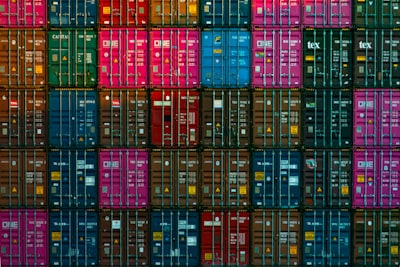For many ambitious entrepreneurs, launching a private label brand on Amazon has become a well-trodden path to success. Sourcing products overseas, often from regions known for efficient manufacturing, has been a cornerstone of this model. However, a significant and growing challenge is casting a long shadow over this landscape: tariffs on imported goods. 
What was once a predictable equation of sourcing, branding, and selling is now complicated by fluctuating import duties, directly impacting the bottom line of countless ecommerce businesses operating on the Amazon platform. Let us delve into how these tariffs are reshaping the world of imported private label products and what it means for sellers.
The Immediate Pinch: Higher Costs Across the Board
The most direct impact of tariffs is the undeniable increase in the cost of goods. When governments impose duties on specific categories of imported products or goods originating from certain countries, Amazon sellers find themselves facing a higher bill just to get their merchandise stateside.
Imagine a seller who has meticulously sourced high-quality bamboo cutting boards from overseas. If a new tariff is implemented on these goods, the cost to import each board immediately jumps. This is not just a small inconvenience; it ripples through their entire business model.
This increase in the base cost then has a domino effect:
- Increased Landed Costs: Beyond the tariff itself, sellers often face higher customs clearance fees, brokerage charges, and potentially longer shipping times due to increased scrutiny at ports. All these factors contribute to a higher overall "landed cost" per unit.
- Erosion of Profit Margins: Unless sellers can successfully pass these increased costs onto consumers (a risky proposition in the fiercely competitive Amazon marketplace), their profit margins will inevitably shrink. For businesses operating on tight margins, this can be a serious threat to sustainability.
- Competitive Disadvantage: Sellers who source similar products from regions with lower or no tariffs suddenly have a significant price advantage. This forces those facing tariffs to either absorb the cost and sacrifice profits or risk losing sales by raising prices.
Navigating the Pricing Puzzle: A Tough Balancing Act
The decision of whether or not to increase prices is a constant tightrope walk for Amazon sellers facing tariffs.
- Raising Prices: While necessary to maintain profitability, increasing prices can lead to a drop in sales volume. In a marketplace where price is often a primary driver for consumers, a sudden price hike can send potential buyers to competitors.
- Absorbing Costs: Eating the tariff costs can protect sales volume in the short term but severely impacts profitability and long-term viability. This is especially challenging for small and medium-sized businesses with less financial buffer.
Beyond the Price Tag: Supply Chain Shake-Ups
The impact of tariffs extends beyond just the immediate cost. They are also forcing sellers to re-evaluate and potentially overhaul their supply chains:
- Diversification of Sourcing: To mitigate the risks associated with tariffs on specific regions, many sellers are actively exploring alternative sourcing locations. Countries like Vietnam, India, and Mexico are gaining traction as businesses look to diversify their manufacturing base. However, this shift can bring its own set of challenges, including establishing new relationships, ensuring quality control, and navigating different regulatory environments.
- Increased Complexity and Risk: Diversifying supply chains adds complexity to logistics and inventory management. It also introduces new potential risks associated with unfamiliar suppliers and transportation routes.
- Potential for Delays and Disruptions: Tariffs can sometimes lead to uncertainty and delays in the movement of goods as customs processes become more stringent or as manufacturers in affected regions adjust their production.
Strategic Moves in Response: Adapting to the New Reality
Faced with these challenges, savvy Amazon sellers are adopting various strategies to navigate the tariff landscape:
- Renegotiating with Suppliers: Some are attempting to negotiate better pricing with their existing suppliers to share the burden of the tariffs.
- Optimizing Inventory Management: Efficient inventory management becomes even more critical to minimize the impact of potential cost fluctuations and supply chain disruptions.
- Exploring Trade Agreements and Exemptions: Sellers are working with logistics providers and customs brokers to understand and potentially leverage any applicable trade agreements or tariff exemptions.
- Considering Domestic Sourcing (Where Feasible): For some product categories, the increased cost of imports might make domestic sourcing a more competitive option, albeit potentially with different cost structures and production scales.
- Focusing on Value and Differentiation: Instead of solely competing on price, sellers are increasingly focusing on building strong brands, offering unique value propositions, and providing excellent customer service to justify their pricing.
The Future Landscape: Uncertainty and Adaptation
The long-term effects of tariffs on imported private label products sold on Amazon remain somewhat uncertain. Ongoing trade tensions and evolving global economic policies mean that sellers must remain agile and adaptable.
While the allure of low-cost overseas manufacturing remains strong for many, the era of frictionless and predictable importing may be drawing to a close. Amazon sellers who can strategically navigate the complexities of tariffs, diversify their sourcing, and focus on building resilient businesses will be best positioned to thrive in this evolving marketplace. The tariff tightrope is undoubtedly challenging, but with careful planning and strategic execution, it is still navigable.